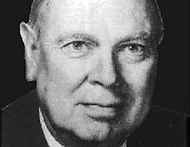We value research and best practices in the field.
Understanding the foundations of IT, which include the history, people and terms, allows us to provide the best possible solutions to our clients.
Sharing that information with our clients helps us work together.
IT's History
Most scholars agree that the instructional design movement began at the start of the 20th century when researchers started to attempt to improve the learning process with visuals and audio-visuals. As time passed, this field began to incorporate radio and television into educational environments as well. Once the 1980’s arrived, the field began to take on a more formal shape, and the focus shifted towards instructional design as a whole, incorporating the technologies from the past and present, but also taking on a broader perspective as well.
Molenda, M., & Boling, E. (2008). Chapter 4: Creating. In Educational Technology: A Definition with Commentary (pp. 81-139). New York: Lawrence Erlbaum Associates.
Influential People & thier BIG ideas.

Robert Gagne'
Robert Gagne' was an experimental psychologist who was concerned with learning and instruction for several decades. His earlier work was in a behaviorist tradition, but later he was influenced by the information-processing view of learning and memory. He is well known for his synthesis of research on learning and the identification of internal and external conditions of learning.

Driscoll, M. P. (2000). Gagné’s theory of instruction. Ch. 10 in Psychology of Learning for Instruction, 2nd ed. Boston: Allyn & Bacon, 341-372
http://www.theoryfundamentals.com/gagne.htm

B.F. Skinner
B. F. Skinner formulated the operant conditioning learning theory. This theory postulated that the environment (stimuli, situations, events) serves as a cue for responding. Reinforcement consequences increase behavior; punishment consequences decrease behavior. Skinner believed behavioral change is learning.

Gredler M. E. (2005). Learning and instruction: Theory into practice (5th ed.). Upper Saddle River, NJ: Pearson.

Benjamin Bloom
One of Bloom’s most recognized contributions to the field of education is Bloom’s Taxonomy. In 1956, Dr. Benjamin Bloom completed his work in the cognitive domain which he referred to as Bloom's Taxonomy of the Cognitive Domain. The taxonomy was developed so that researchers could categorize the objectives of the learning system. Bloom detailed how learning is arranged in a hierarchy from less complex to more complex.

Bloom, B. S. (1956). Taxonomy of educational objectives: The classification of educational goals.
Anderson, L. W., Krathwohl, D. R., & Bloom, B. S. (2001). A taxonomy for learning, teaching, and assessing: A revision of Bloom’s taxonomy of educational objectives. Allyn & Bacon.
IT Terms & Definitions
Instructional Technology: Any system, resource or tool that supports the facilitation of learning.
Instructional Systems Technology: The methods used for improving the effectiveness of the design process through technology.
Educational Technology: Any system, resource or tool that supports the achievement of learning.
Instructional Systems Design: The method for creating learning experiences that develops and enhances skills and knowledge.
Instructional Design: A systematic plan to accomplish the learning goals.
Cognitivism: A learning theory based on the learner’s ability to connect previously learned material to new information to form new ideas.
Constructivism: A learning theory based on the learner’s ability to create their own knowledge.
Behaviorism: A learning theory based on conditioned responses that occurs when the learner reacts to stimuli.